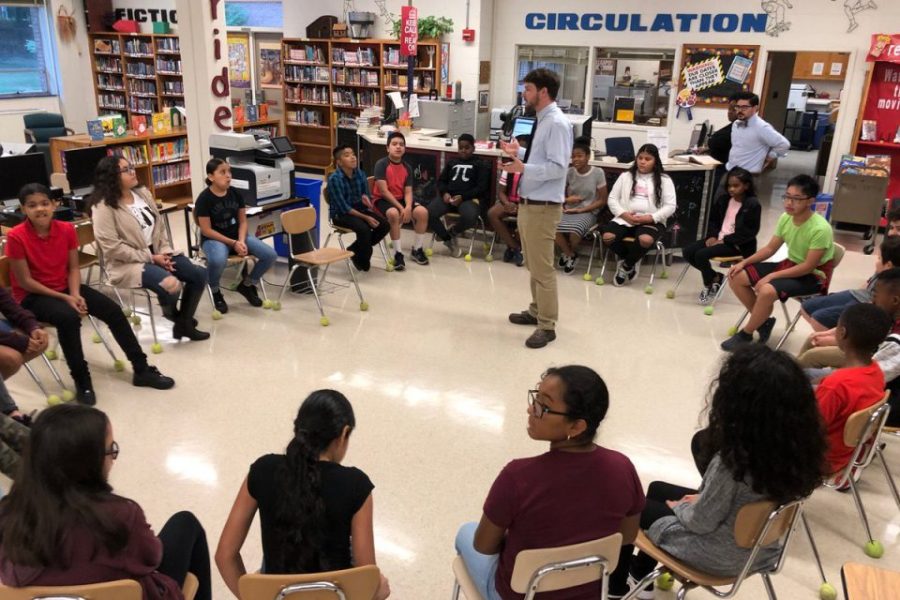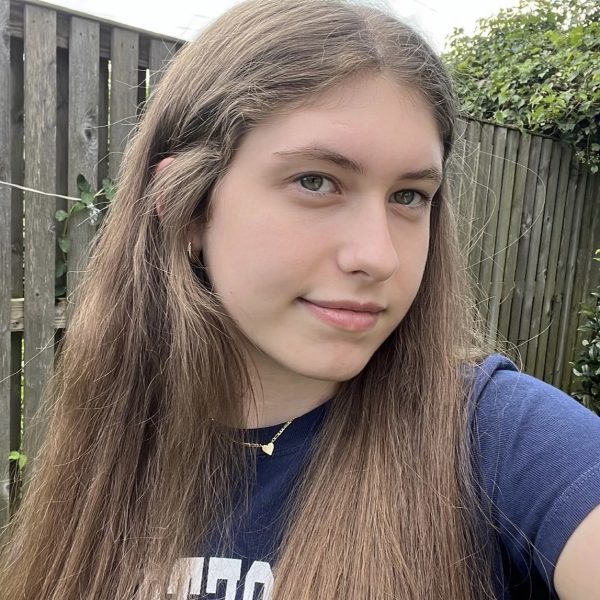Restorative justice is the future of conflict resolution
A restorative justice circle from Dec. 4 at Neelsville Middle School. Students across the county participate in restorative justice workshops to correct their behavior and learn how to better the community.
March 17, 2022
Imagine a student who has gotten into a physical altercation on school grounds. As the student is hauled off to the principal’s office, what is the first punishment that comes to mind? Most would say a suspension, but this overused, outdated “solution” is both ineffective and harmful.
“Zero-tolerance” policies, often executed through out-of-school suspensions or even expulsions, impose strict punishment for violations of school rules. However, these methods have little to no role in correcting behavior from the source, and often cause more problems than they solve. A proposal to this ongoing issue is the “restorative justice” method, which has been brought to light in recent years, and is continuing to become more popular because of its contrast to traditional punishments.
During a Pride Advisory lesson on Feb. 16, WCHS students were introduced to the ideas behind this alternative way of correcting student behavior. Restorative justice enforces discipline by “building community, self-care, and conflict resolution,” according to the MCPS website. By allowing students to actively engage in and talk about the conflicts they have been involved in, a healthier, more effective way for students to learn from wrongdoings is created.
With this method, students are able to learn how their actions affect themselves as well as others around them. They are able to get a deeper understanding of why what they did is wrong, and realize how those actions result in consequences. Compare that to a suspension, which does not allow students to recognize their situation in the same way.
In a restorative justice workshop, students talk about the issue and work with those affected to address the harm they caused. Through this, they get to learn and take accountability for their actions. Conversely, during a suspension, a student is most likely not focused on those same aspects and instead spends their time resenting being punished. Those students are not able to fully comprehend the issue, which can result in a failure to correct that behavior for the future. This is why restorative justice needs to be the new foundation for corrective actions in the future.
The use of exclusionary discipline by schools has been found to increase the likelihood of students facing problems with the law as adults. In a research paper by authors at Boston University, Harvard University and the University of Colorado, it was discovered that children who attend schools with higher rates of suspension are about 15 to 20 percent more likely to be arrested and incarcerated as adults, as exclusionary discipline essentially creates a “school-to-prison pipeline” for those who are most vulnerable.
Some say that restorative justice is too “lenient” and does not impose strict enough consequences for students. They argue that by not giving stricter punishments, such as suspensions, students conclude that no serious repercussions will be the result of their harmful behavior.
However, the less traditional way in which restorative justice allows students to take responsibility for their actions does not mean students are not learning from their mistakes. It actually helps students better understand how their actions directly impact others. And while restorative justice cannot be applied to all situations, it is a step in the right direction for students to constructively address the problems that affect themselves and the community.
In order to take that next step and successfully support positive behaviors, MCPS needs to implement school-wide adjustments in line with restorative justice, such as shifts to classroom environments and introduction of new instructional models. Teaching students about restorative justice, as well as having them participate in workshops, is the best way to make sure this method is utilized all throughout MCPS, and more specifically, at WCHS.
By allowing students to participate in restorative justice workshops, as opposed to suspending them, MCPS would be helping students change their futures. And if restorative justice starts to become more common in schools, the long-term changes will be beneficial.



